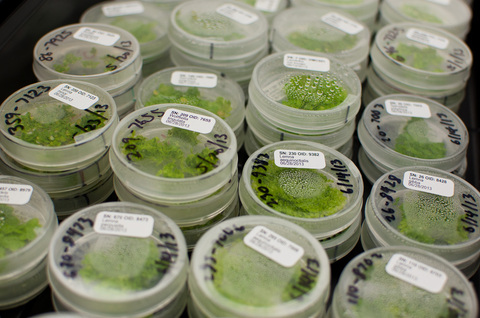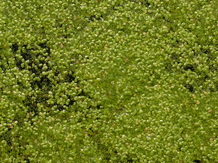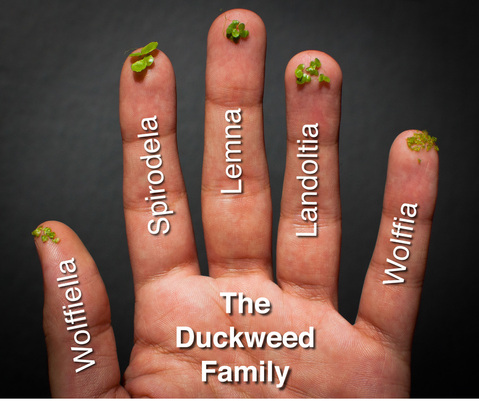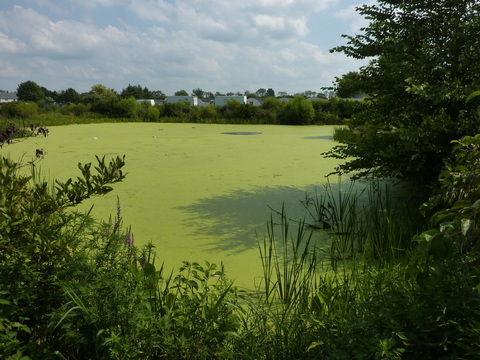Finding the Right Duckweed for the JobThere are 37 species of duckweed distributed worldwide, from Siberia to the tropics. Many species grow in multiple locations, forming genetically distinct populations, called strains or clones. The largest collection of duckweed strains—with over 900 accessions (some of which are pictured right)—is housed at the Rutgers Duckweed Stock Cooperative. Researchers in the Lam lab exploit the large genetic diversity of duckweed by systematically comparing strains in the collection; we measure metabolite levels and growth characteristics under a range of environmental conditions. The aim is to find a strain that is well suited for a particular application and environment. For example, strains with a high protein content are ideal for animal feed, whereas strains with a high starch content, the precursor for ethanol, are desirable for biofuels. Ultimately, promising candidates will be tested in the field to determine if large-scale production is technically and economically feasible.
|

Duckweed strains belonging to the Rutgers Duckweed Stock Cooperative stored in petri dishes. Click to enlarge.
|




